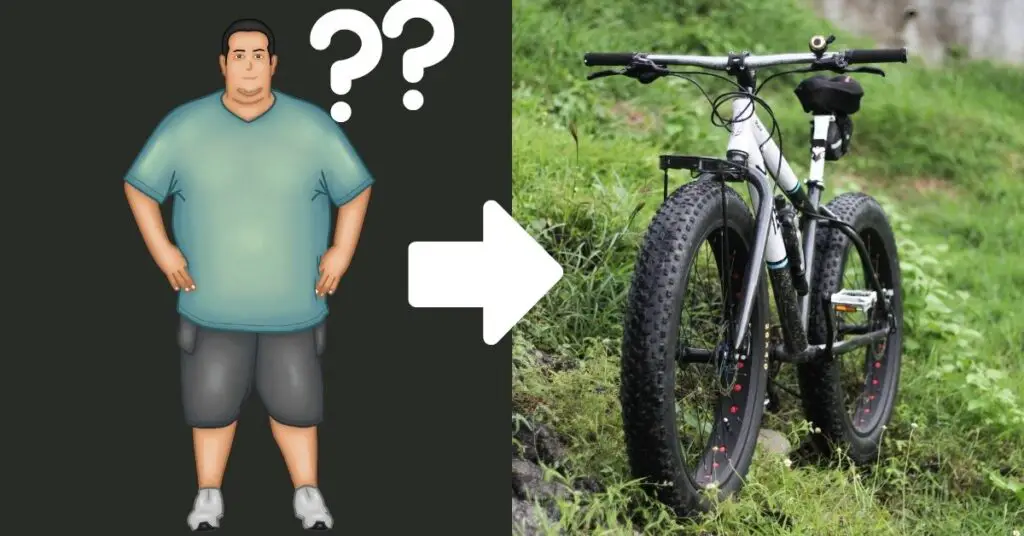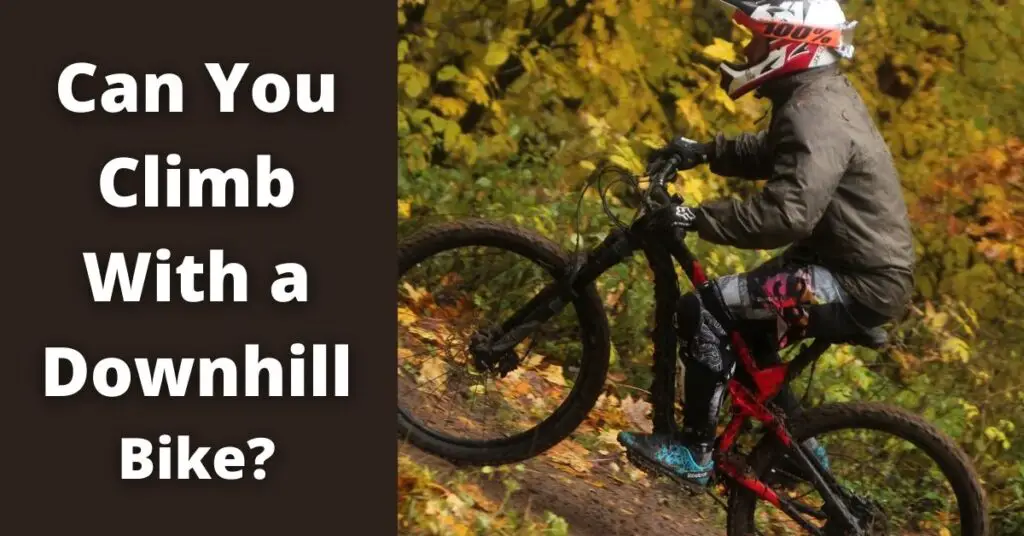A fat bike, otherwise known as an all-terrain bike, may look like a cartoon bike, but it is a mountain bike. This doesn’t mean you can only use it off-road.
The fat bike is worth considering if you are new to the world of cycling or looking for an out-of-the-ordinary cycling experience. As winter approaches, local bike dealers find that fat bikes and fat bike tires are more in demand than ever before.
Keep reading for tips and advice on the features and stability of the modern fat bike.

Are Fat Tire Bikes More Stable?
Simply put, yes, fat bike tires are more stable than other bike tires. Their wider fat tires provide better balance, perfect for any beginner cyclist or an avid cyclist keen on adventure cycling.
The fact that the tires are low-pressure means they offer greater traction on bumpy terrain, providing an unrivaled level of comfort and stability.
They also have an excellent ability to climb if you are a cyclist looking to do some hill climbs.
From a stability point of view, fat bike tires have superior cornering capabilities providing a more stable feel for riders.
Unlike their smaller bike counterparts, fat bike tires cover a much larger surface area when cycling, which explains the improved stability and effective handling.
The fat bike also has a sturdy frame to support its wider tires, increasing stability and making for a smoother, confident riding quality.
What Makes a Fat Bike More Stable?
Several features make these bikes unique when compared to standard mountain bikes and other bikes. We have listed them below:
1- Tire Surface & Width
The most apparent characteristic of fat bikes is their massive tires, which range between three and a half inches wide and five inches wide. This is in comparison to regular mountain bike tires that are generally two to three inches wide.
The width of the tire on the fat bike gives this bike an edge when it comes to softer terrain, not to mention better ground clearance than a traditional mountain bike.
The fatter tires bring cyclists a good amount of travel and rebound, which is something to consider when it comes to suspension and the set-up of your bike.
A mountain bike has a knobbly tread on the tire designed to grip bumpy terrain and cover obstacles. In contrast, the tire surface of a fat bike is much softer, effectively absorbing impacts when cycling.
More and more cyclists want a fat bike, so it is no surprise that you find cruisers that are also fitted with these bigger tires.
An added benefit is that you are far less likely to get punctures because of the thickness of the tires, something most cyclists will appreciate.
2- Wheel Size & Rims
Fat bikes are one of the few remaining bikes that still use twenty-six-inch tires. However, manufacturers have recently started producing slightly larger rims and can accommodate tires that are twenty-seven and a half inches wide.
The size of the tire and rim are the features that give this bike its unique riding capabilities.
Rims on most mountain bikes have a standard width of 21mm, whereas fat bike rims can be as much as 90mm, perfect for those five-inch size tires.
To accommodate the rims and increased tire size, you will see that the rear end of the fat bike is longer than a standard mountain bike which increases stability.
3- Suspension
Fat bikes usually come standard with a rigid fork upfront with no suspension at all. The reason for this is that the jumbo tires do provide the necessary absorption you need to dampen any shocks along your route.
Although bike tires are not meant to be shock absorbers, they do the job quite well.
Some manufacturers have made full suspension forks for cyclists who may have back problems or simply prefer suspension forks.
The rider’s cycling style, speed, and terrain type ultimately determine what type of suspension is required.
Where Can You Use Fat Bikes?
It is no secret that fat bikes can be used on many different types of terrains. These bikes are more than capable and can cover anything from sand to snow to rock gardens, rocky trails, and muddy terrain.
Fat bikes are not meant to replace your mountain bike but are more for long cadence strength effort.
Fat bikes are ideal for use all year round, which is a bonus for those cyclists who are usually stuck indoors in the winter months.
Below we have covered some of the terrain types where you can use fat bikes:
Desert Sand & Beach Sand
Fat bikes were initially designed to traverse desert areas, so you can ride them on dunes or sandy trails.
The large surface area of the tire gives it a lot more traction than other bikes, which makes it perfect for navigating soft sand.
Road biking is less skillful than fat biking as you simply cycle down the road. If you are navigating soft sand, you require a lot more concentration which increases your skill factor.
There are a few tips you need to know if you are riding through sand:
● If you approach soft sand, it is a good idea to gear down so that you are pedaling with very little power.
● As you hit the soft sand, your front tire doesn’t have much traction, so it tends to veer to one side. You have two options; you can stop pedaling and put your feet down or continue pedaling and steer into the direction you want to go.
This is an excellent way to navigate soft sand using fat bike tires. By continuously pedaling your fat bike, tires will easily navigate through soft sand.
● Keep your wits about you as you traverse soft sand, or you may find yourself stuck in the sand and will have to start pedaling from scratch.
● Beach sand can be navigated in much the same way as desert sand. With four-inch tires, you will be easily able to traverse softer beach sand with less pedaling. If you ride closer to the sea where the sand is packed, you will find it is even easier to cruise along and saves you pedaling.
Road and Street Riding
Designed for snow and desert riding, you may have doubts about whether the fat bike can handle street riding, road trips, and tricks.
The first point is that it does take a while for cyclists to become accustomed to a fat bike as it is a different ride from your standard road bike or mountain bike.
Fat bike tires have been tried and tested by a few experts. The outcome of these tests is that fat bikes are well suited for cycling on the road and for street riding.
Ideal for commuting to school or work, these bikes handle well on any tar surface.
When it comes to performing tricks such as climbing or riding down concrete stairs, fat bikes can easily climb with no trouble at all.
Snow
Snow is one of the fat bikes’ natural habitats. Also, this study proves that fat bikes do not impact the environment negatively.
You don’t need to be stuck at home indoors during the winter months.
Consider taking your fat bike for a ride in the wintery conditions, and you might just find you enjoy it and get to stay in shape. Before you start, make sure you have the correct tire pressure for snow.
Ideally, your tire needs to be deflated a tiny bit for the softer snowy terrain. We recommend a tire pressure of around 6psi. This will provide you with tons of grip in any depth of snow.
Your riding style does not need to change when navigating the snow, although the ground seems slippery and wet. The large tires provide more than enough grip to ensure a stable and comfortable ride.
In thick snow, we suggest trail riding rather than cycling on tar roads as these can be slippery and not ideal from a safety perspective on your fat bike.
Is a Fat Tire Bike Easier to Ride?
There are plenty of myths when it comes to riding fat bikes. Most cyclists have never had the opportunity to ride a fat bike and question whether fat bikes can meet the demands of everyday cycling.
Fat bikes are easy to ride despite their looks, although they require a little bit of extra pedaling effort compared to standard mountain bikes. They might seem clunky, but they are surprisingly durable.
Their wide tires provide additional support and versatility, which some cyclists compare to the feeling of floating as they cycle along the trails.
The added traction of these fat bikes means that cyclists can take on challenging trails which they may not have been able to navigate before.
It is harder to ride these bikes on the road as the tires tend to be softer, which means extra pedaling for the rider.
Overall the fat ride is a bike that any level of cyclist can easily ride.
How Fast Do Fat Bikes Go?
Fat bikes are fun but are they fast? It is a well-known fact that the more streamlined the bike, the faster it will go. Bike manufacturers have taken this into account in the design of the fat bike.
The bike is aerodynamic and light which gives it an extra burst of speed. You may not win any cycling races, but you will give fellow cyclists a ride for their money.
The fat bike does not have the top speed of road bikes, but it certainly can pick up the pace on any terrain. For its overall purpose, the speed ability of the fat bike is ideal and provides a comfortable ride at the same time.
Final Thoughts!
If you are looking for a rewarding cycling experience, fat bikes are worth a try.
Despite their heavy appearance, fat bikes are surprisingly light and provide a very smooth ride. These bikes are a lot more capable than people might believe.
Fat bikes will not disappoint (when it comes to stability), whether it’s bike tracks, trail riding, or a good old-fashioned bike ride you are looking for.
As they say, don’t knock it till you try it!




